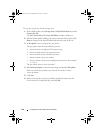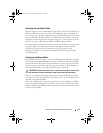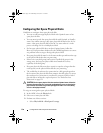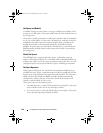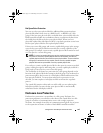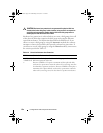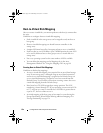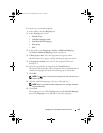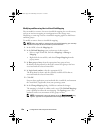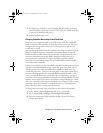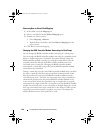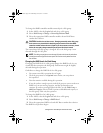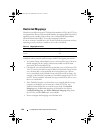
124 Configuration: Disk Groups and Virtual Disks
Host-to-Virtual Disk Mapping
After you create virtual disks, you must map them to the host(s) connected to
the array.
Guidelines to configure host-to-virtual disk mapping:
• Each virtual disk in the storage array can be mapped to only one host or
host group.
• Host-to-virtual disk mappings are shared between controllers in the
storage array.
• A unique LUN must be used by a host group or host to access a virtual disk.
• Each host has its own LUN address space. MDSM permits the same LUN
to be used by different hosts or host groups to access virtual disks in a
storage array.
• Not every operating system has the same number of LUNs available.
• You can define the mappings on the Mappings tab in the Array
Management Window. See "Using the Mappings Tab" on page 88.
Creating Host-to-Virtual Disk Mappings
Guidelines to define the mappings:
• An access virtual disk mapping is not required for an out-of-band storage
array. If your storage array is managed using an out-of-band connection,
and an access virtual disk mapping is assigned to the Default Group, an
access virtual disk mapping is assigned to every host created from the
Default Group. To prevent this action from occurring, remove the access
virtual disk mapping from the Default Group.
• Most hosts have 256 LUNs mapped per storage partition. The LUN
numbering is from 0 through 255. If your operating system restricts LUNs
to 127, and you try to map a virtual disk to a LUN that is greater than or
equal to 127, the host cannot access it.
• An initial mapping of the host group or host must be created using the
Storage Partitioning Wizard before defining additional mappings. See
"Storage Partitioning" on page 134.
book.book Page 124 Wednesday, June 8, 2011 5:01 PM



